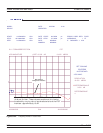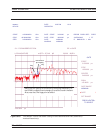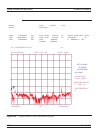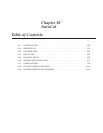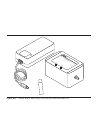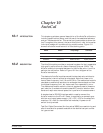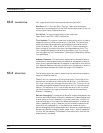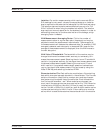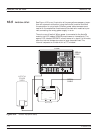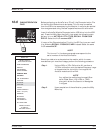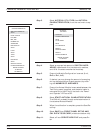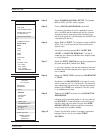
10-3 CALIBRATIONS Four types of calibration can be performed using AutoCal:
One-Port: S11 1-Port and S22 1-Port are 1-port calibrations per
-
formed on the indicated port of the VNA and are equivalent to the tra
-
ditional Open-Short-Load calibrations.
Full 2-Port: This type is equivalent to the traditional
Open-Short-Load-Thru (OSLT) calibration.
Thru Update: This type is a new form of calibration which is used to
update an existing 12-term calibration in the VNA. This calibration
could have been performed using any method of calibration which
yields 12 terms (LRL, LRM, AutoCal, or OSLT). Due to cable move
-
ment and aging, the calibration may have degraded over time. The
Thru Update refreshes the calibration by measuring a Thru connec
-
tion and updating the Transmission Tracking and Load Match calibra
-
tion coefficients.
Adapter Removal: This calibration measures the characteristics of
male-male or female-female test port cables for subsequent measure-
ment of non-insertable devices. An adapter is required for this calibra-
tion. Adapter Removal requires two calibration procedures in order to
calculate the parameters and electrical length of the adapter.
10-4 DEFINITIONS The following terms are used in explaining the calibration procedure
using the AutoCal module:
Thru: A thru is a connection of the two test ports. Two kinds of thru
connections are defined for the AutoCal calibration: (1) a Calibrator
thru is an internal path through the calibrator. (2) a True thru is a di
-
rect cable connection between the test ports, with no intervening con
-
nectors. The calibrator thru is not as accurate as a true thru, so the
you have the option during a calibration to use the more accurate
method, if necessary.
Switch Averaging: The mechanical AutoCal module uses electro-me
-
chanical switches to select calibration standards. These switches have
a small amount of non-repeatability (typically less than –55 dB). For
most calibrations, this is more than adequate because it is below con
-
nector repeatability error. If desired, you can choose to reduce the ef
-
fect of this non-repeatability in the mechanical module by using
Switch Averaging, which causes additional calibration measurements.
By setting a Switch Averaging factor larger than 1, switch repeatabil
-
ity error will be reduced. The tradeoff is that calibration time will be
proportionally increased.
CALIBRATIONS AUTOCAL
10-4 37xxxE OM



